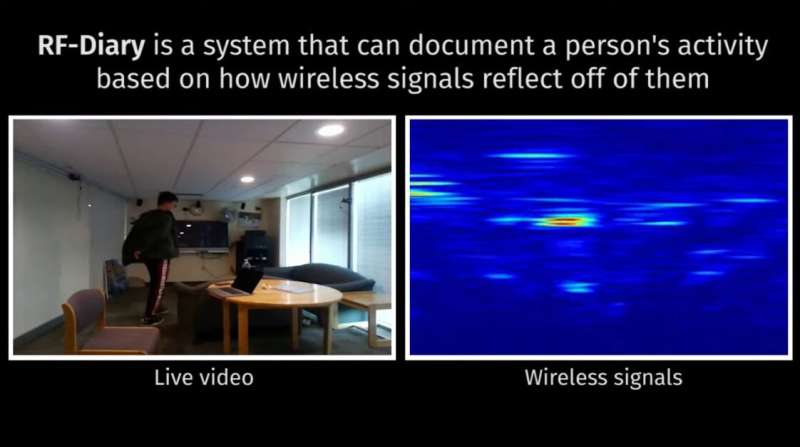A team of researchers at MIT has developed a system for monitoring the activity of people at risk remotely while preserving their privacy. The researchers have written a paper describing their system, which they call RF-Diary.
There are many people at risk living alone. Some are older, some have debilitating diseases and other mental impairments. What they have in common is a need for those who care about them to know that they are doing OK. Current options include phone calls or in more extreme cases, cameras in every room. The latter option is considered far too invasive for most people—they want their privacy regardless of their condition. In this new effort, the researchers have found a way to monitor people while preserving their privacy: using radio waves instead of cameras.
Firing a stream of radio waves at a designated spot and recording what is reflected back to a sensor can indicate the presence of an object. Radio waves can also be used to note the presence of people. The researchers at MIT combined this ability with a deep-learning AI application to create a system that is able to monitor the movements and activities of a person in a given living space. To allow the AI system to learn about the person involved and their living space, it is trained on a map of the living space along with identifiable objects. Next, the person being monitored (or a reasonable stand-in) goes through the motions of everyday activities as radio waves are beamed into the living space to train the system. Sensors record the reflected waves, and over time, the system correlates radio wave signals with certain movements and activities.
Once the system is trained, it continues to fire radio waves into the living space and listens for reflections, translating them into actions such as walking, sitting or sleeping. It also is able to connect actions with objects, such as using the stove, working on a laptop or picking out and putting on clothes. The system prints out a stream of statements describing the action, allowing those who read them to know that their loved one is safe.
More information: RF-Diary at the MIT website: rf-diary.csail.mit.edu/
© 2020 Science X Network
























